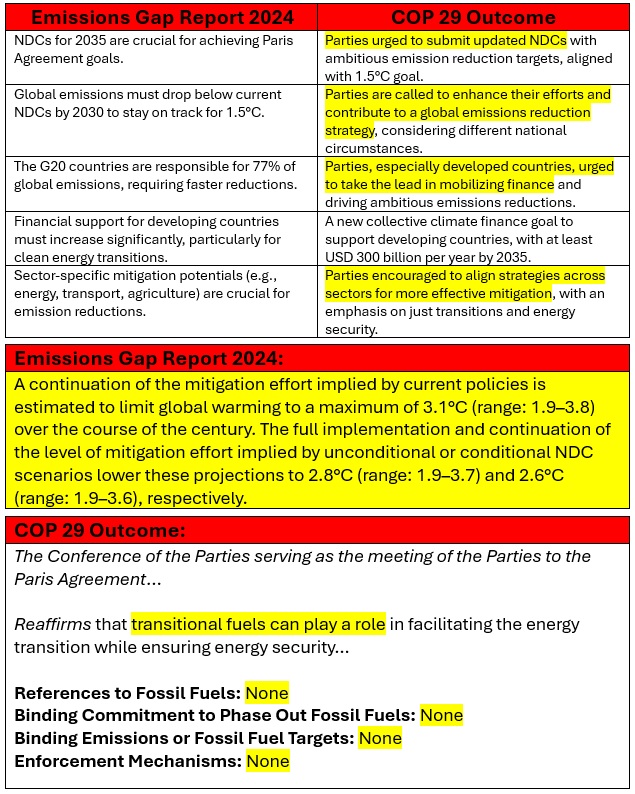PRINT AS PDF
2024 remains on track to become the hottest year on record on all of the major climate data sets. To avoid setting a new record, November 23-December 31 would have to see global temperatures that were last seen in 2000.
Climate change played a major role in the exceptional heat in the Sahel region in April, the April-May heat in Asia, the sustained extreme heat in Mexico during May and June, the Mediterranean heatwave in July, and the unprecedented autumn heatwave in the Southwestern United States. The 2024 emissions gap report revealed that the world remains on track for 2.6°C-3.1°C warming by 2100. It’s cover pleaded with those who would gather for COP 29, “No more hot air…please!”
If one wondered what inaction would look like, one saw it at COP 29. The conference, which featured some late-moment drama, was as close to a total failure as it could have been. Despite spin coming from some quarters that it made at least some progress, the reality is that it made no progress.
Instead of agreements, declarations, or binding commitments, nations were urged, called upon or encouraged to act. No mention of fossil fuels, responsible for the climate-warming greenhouse gas pollution, was made in any of the four concluding documents. Instead, in an act of cynicism borrowed from COP 28, “transitional fuels,” meaning such fossil fuels as natural gas, were embraced as helpful for the “energy transition.”
Perhaps in the insular world of COP 29, the participants believe rhetoric alone is sufficient to address problems. Just maybe, they believe that one can simply wish away anthropogenic climate change. Outside COP 29, there is broad consensus that credible goals and commitments are specific and measurable. They come with clear targets to guide progress. The most effective ones come with mechanisms to address gaps, be they cost overruns or production shortfalls, when they arise. None of these attributes made it into any of the four COP 29 documents. If anything, COP 29 delivered the last rites for the Paris Goal of holding warming to no more than 1.5°C.



